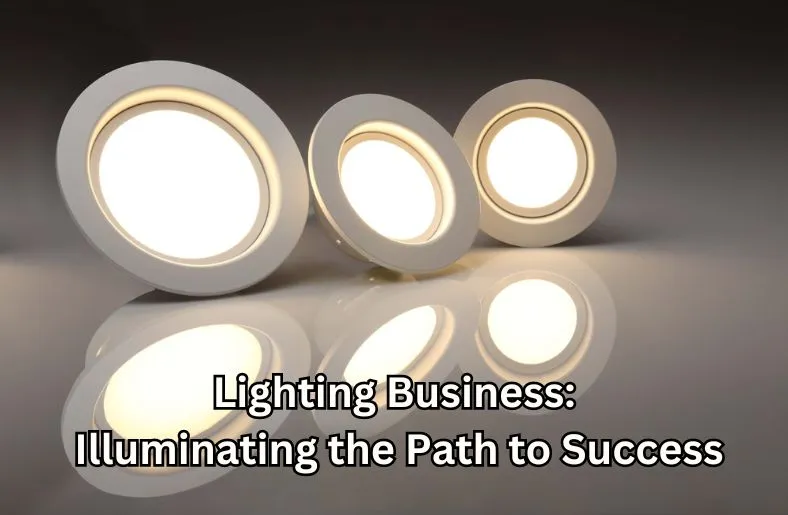In today’s fast-paced world, lighting is more than just a necessity—it’s a critical component of our daily lives, shaping our environment and influencing our well-being. Whether it’s the cozy ambiance of a living room or the bright, focused light of a workspace, lighting plays a pivotal role. And at the heart of this industry are the LED lighting manufacturers who are revolutionizing the way we light up our world. Let’s dive into the fascinating world of the lighting business and discover how it impacts us all.
Introduction to the Lighting Business
Lighting is fundamental to human life, akin to the air we breathe and the water we drink. But beyond just lighting up spaces, the lighting business has evolved into a sophisticated industry driven by innovation, efficiency, and sustainability. Let’s explore how this industry has transformed over the years.
The Evolution of Lighting
From the flickering flames of ancient torches to the electric glow of incandescent bulbs, lighting has come a long way. Today, LED lighting represents the pinnacle of this evolution, offering unprecedented efficiency and versatility. It’s hard to imagine that just a few decades ago, the idea of LED lighting was confined to indicator lights and digital displays.
What is LED Lighting?
LED stands for Light Emitting Diode. Unlike traditional bulbs, LEDs don’t rely on a filament that burns out or gets hot. Instead, they use semiconductors to convert electricity into light. This simple yet ingenious technology allows LEDs to be incredibly efficient and long-lasting.
Benefits of LED Lighting
Why should you care about LED lighting? Here are some compelling reasons:
- Energy Efficiency: LEDs use up to 80% less energy than traditional incandescent bulbs.
- Longevity: They can last up to 25 times longer, saving you money on replacements.
- Environmental Impact: LEDs are free of toxic chemicals and fully recyclable, reducing your carbon footprint.
- Versatility: Available in a wide range of colors and intensities, they can be used for various applications from mood lighting to streetlights.
LED Lighting Manufacturers: Who Are They?
The backbone of the LED lighting industry is the manufacturers who design, develop, and produce these innovative products. But who exactly are these LED lighting manufacturers? They range from large multinational corporations to smaller, specialized firms, each contributing uniquely to the market.
Key Players in the LED Lighting Industry
Several companies stand out as leaders in the LED lighting space. Giants like Philips, Osram, and Cree have been pioneers, consistently pushing the boundaries of what LEDs can do. These companies invest heavily in research and development, ensuring they stay ahead in the competitive market.
How LED Lights Are Made
The production of LED lights is a meticulous process involving several stages:
- Design: Engineers design the LEDs to meet specific requirements.
- Wafer Production: Semiconductors are grown on wafers in a cleanroom environment.
- Chip Manufacturing: The wafers are cut into individual chips, which are then tested for quality.
- Packaging: The chips are encased in protective materials and assembled into usable products.
- Quality Control: Each LED undergoes rigorous testing to ensure it meets industry standards.
The Role of Innovation in LED Lighting
Innovation is the lifeblood of the LED lighting industry. From smart lighting systems that can be controlled via smartphone apps to tunable LEDs that mimic natural daylight, manufacturers are constantly seeking new ways to enhance their products. This relentless pursuit of innovation keeps the industry vibrant and forward-thinking.
Environmental Impact of LED Lighting
Switching to LED lighting is one of the most effective ways to reduce energy consumption and greenhouse gas emissions. LEDs use less electricity and last longer, meaning fewer resources are needed for production and disposal. This makes them a crucial part of the global effort to combat climate change.
LED Lighting in Different Sectors
LED lighting has a broad range of applications across various sectors:
- Residential: Energy-efficient bulbs for homes.
- Commercial: Bright, reliable lighting for offices and retail spaces.
- Industrial: Durable, high-intensity lighting for factories and warehouses.
- Outdoor: Weather-resistant lights for streets and public spaces.
- Healthcare: Specialized lighting for hospitals and clinics to improve patient care.
Choosing the Right LED Lighting Manufacturer
When selecting an LED lighting manufacturer, consider the following factors:
- Reputation: Look for companies with a proven track record.
- Quality: Ensure their products meet industry standards.
- Innovation: Choose manufacturers that invest in research and development.
- Customer Support: Good after-sales service is crucial for addressing any issues.
Future Trends in LED Lighting
The future of LED lighting looks bright (pun intended). Emerging trends include:
- Smart Lighting: Integration with IoT devices for enhanced control and automation.
- Human-Centric Lighting: Designs that align with our natural circadian rhythms.
- Sustainable Materials: Increased use of eco-friendly materials in production.
- Advanced Applications: LEDs in horticulture, UV disinfection, and more.
Challenges Faced by LED Lighting Manufacturers
Despite their many advantages, LED lighting manufacturers face several challenges:
- Cost: High initial investment in technology and equipment.
- Competition: The market is crowded, making differentiation difficult.
- Regulations: Navigating different standards and certifications across countries.
- Supply Chain: Ensuring a steady supply of high-quality materials.
How to Start Your Own Lighting Business
Interested in entering the lighting industry? Here are some steps to get you started:
- Research: Understand the market and identify your niche.
- Plan: Develop a business plan outlining your goals and strategies.
- Funding: Secure the necessary capital to launch your venture.
- Product Development: Design and test your lighting products.
- Marketing: Promote your brand and products to attract customers.
- Sales Channels: Establish distribution networks, both online and offline.
Conclusion and Future Outlook
The lighting business, particularly the realm of LED lighting manufacturers, is dynamic and ever-evolving. As technology advances and the demand for sustainable solutions grows, the industry is poised for continued innovation and expansion. Whether you’re a consumer looking for better lighting options or an entrepreneur eyeing a new business venture, the world of LED lighting offers endless possibilities.
FAQs
- What are the main benefits of LED lighting?
LED lighting is energy-efficient, long-lasting, environmentally friendly, and versatile, making it a superior choice over traditional lighting options.
- How do LED lights help the environment?
LED lights reduce energy consumption and greenhouse gas emissions, are free of toxic chemicals, and are fully recyclable, contributing to a smaller carbon footprint.
- What should I consider when choosing an LED lighting manufacturer?
Look for reputation, quality, innovation, and customer support when selecting an LED lighting manufacturer to ensure you get the best products and services.
- What are the future trends in LED lighting?
Future trends include smart lighting, human-centric lighting, sustainable materials, and advanced applications in various fields like horticulture and healthcare.
- How can I start my own lighting business?
Begin with thorough market research, create a solid business plan, secure funding, develop and test products, market your brand, and establish sales channels.





